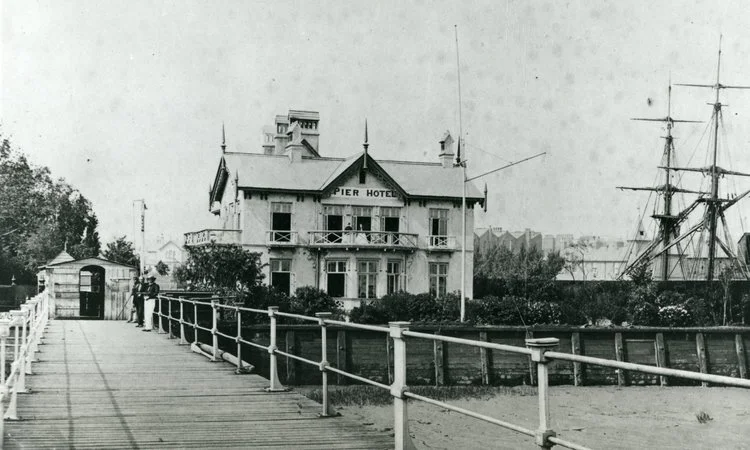ERITH MUSEUM
In 1959, part of the old library was converted into the new Erith Museum, a place where anyone could come and learn about their local history. First founded in the 1930s by the building’s second Head Librarian Florence Barton Young, it was originally located on the lower ground floor before moving up stairs into what was originally the Librarian’s living quarters. The Museum consisted of a domestic display interpreting local life from Victorian times to the 1950s, archaeological displays showing the area’s prehistory including the story of Lesnes Abbey, industrial objects, items that told the wartime story and artefacts that demonstrated the importance of the river to the town. The image below is an item produced by Erith's Mobo Toy Factory.
The founding of the museum and the inclination to remember the past coincided with general urban and industrial decline caused by WW2 damage and a struggle to adapt industry to an environment of post-war austerity. In the 1960s, new plans emerged to improve the town centre which sadly meant the loss of many of the historic buildings; the new ‘concrete jungle’ town centre was considered a poor replacement for what had existed before. There was also a feeling that valued public space was under threat, including the Old Library and Erith Museum. Cuts to public funding meant that by the year 2000, the Erith Museum Collection was being managed by Bexley Heritage Trust and access to the old Erith Museum was provided by a team of enthusiastic local volunteers.
The Erith Museum was an important asset to the community, as it told of the town’s brighter past in the context of great change of which residents had little control.
The name Erith comes from the Saxon ‘Earhyth’ meaning muddy/gravelly landing place; the earliest reference to the area is in a Latin charter of 695 and there is evidence to suggest that a Saxon church was on the current site of St John’s (at the top of West Street). In the 16th century, Henry VIII founded his naval dockyard further down river – marking a move of the town’s centre to its current location. Later diarist Samuel Pepys would chronicle Erith – a place where he did business, and would meet and dine with East India and Navy men on board the ships that anchored at Erith harbour; Joseph Conrad too would talk of Erith and its transients – “the adventurers and the settlers; kings’ ships and ships of men on ‘Change; captains, admirals, the dark “interlopers” of the Eastern trade”.
In the 1840s, Erith became a popular watering place – a steamer landing, hotel and pleasure gardens were built along the river, welcoming well-to-do Londoners on the hunt for recreation. This decade also marked the arrival of the railway, which would transform the town into a major industrial centre, and see the end of the town as pleasure resort. Already the range of manufacturers in the town was vast – steam engines, armaments, stoneware, mining equipment, and bricks and loam from the local pits. At the end of the 19th century further industries included road-making and cable manufacturing (Callender’s Bitumen Telegraph & Waterproof Company/BICC), ironworks (Easton & Anderson), steam plant and milling machinery (Fraser & Chalmers) and flour mills (Cannon & Gaze). Erith became the biggest wealth generating town in the district, and because of its good connectivity, attracted wealthy residents. The Victorian High Street and Pier Road became the principal retail attraction in the area, with Mitchell’s Department store taking the top slot as “The Shopping Centre of Kent”.
In 2009, the museum and library were closed owing to mounting maintenance costs and dwindling numbers. The library was relocated to modern facilities in the town centre, and the museum display items moved into storage and used for Hall Place exhibitions and displays at the new library.



